We left Cheverny and made the half-hour drive to the town of Blois. Here sits one of the most interesting chateaux in all of France, in a very enjoyable city. We made Blois our base of operations for the next three days.
Our arrival in Blois was not without some nervousness: we had to trust the GPS 100% to get us to our hotel; we didn’t know anything about the hotel or what it was like; and we didn’t know if we’d able to park there – always a problem in an old city like this.
The GPS performed flawlessly, taking us through a twisting and turning route right to the hotel. Which had zero parking. So I drove down a street by the train station and amazingly found on that street one open space that was, even more amazingly, free and unlimited as to how long we could leave the car there. Score!
Then we lugged our stuff back to the hotel and found this lovely lobby and reception area:
This is it: the entire lobby and reception area of the hotel. No one was there. We rang the bell a few times and a fellow appeared and gave us the impression of not caring a hoot about anything, including his newly-arrived guests. But then he said we needed a bigger room because I’m tall, so he gave us a room upgrade, which was nice. And we were glad he did, because the upgraded room was none too big. We looked in a couple of the regular rooms – they were really small and we would not have been happy in one. Anyway, in the end, the hotel turned out fine, if not exactly luxurious, and Laurie pointed out that it often had the feel of Fawlty Towers. True!
And the kind-of-grumpy fellow at the desk? We think he was grumpy because he did everything at the hotel, except housekeeping. He was at the desk at 11 o’clock at night, and in the breakfast room when it opened at 7 the next morning. Overworked? Oh, yeah. In fact, he turned out to be a good person.
Blois Chateau
We had read quite a bit about Chateau Blois (mostly in Ina Caro’s book, “Road to the Past.” If you are doing some traveling around France, this is a must-read). Chateau Blois has an interesting history, but what’s most interesting are the four wings, each built in a different era of French culture and architecture, so you can stand in the courtyard and see how France changed over three hundred years.
For an overall view of the chateau, take a look at this picture:
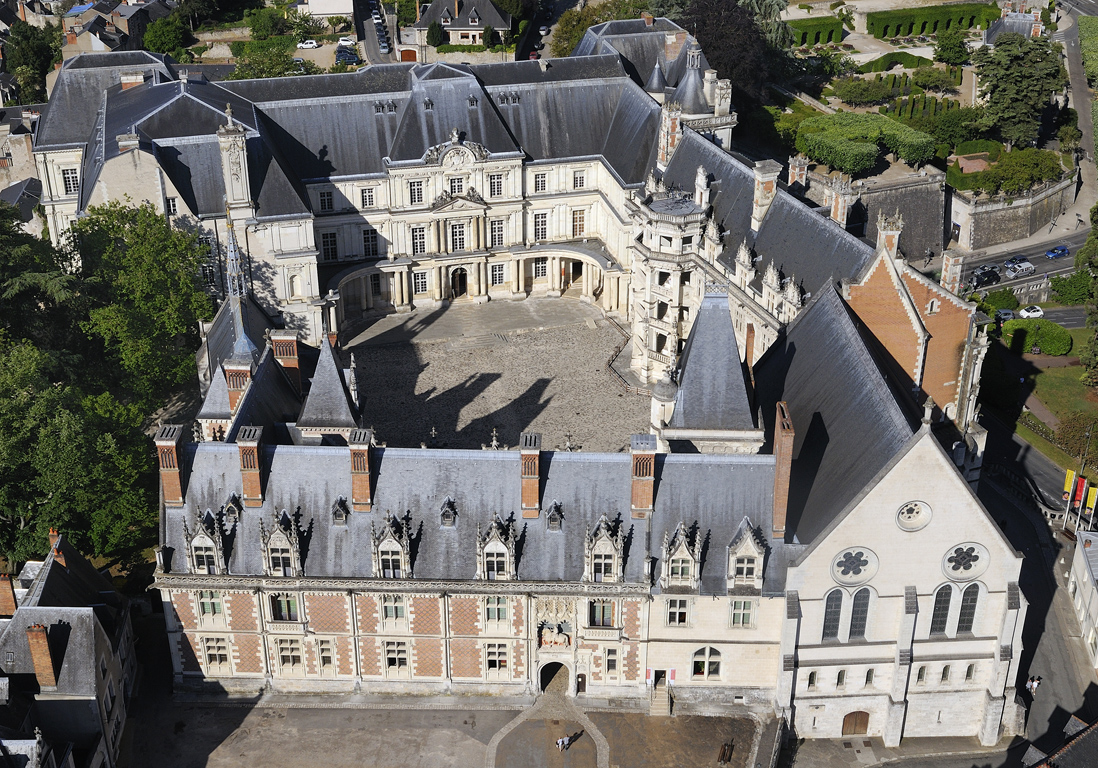
The earliest wing is in the lower right-hand corner. Starting there, here are the four wings:
Gothic – that structure in the lower right-hand corner, built in the 13th century. This structure was much larger when built, but successive kings demolished parts as they built their own wings, and only this part of the building remains.
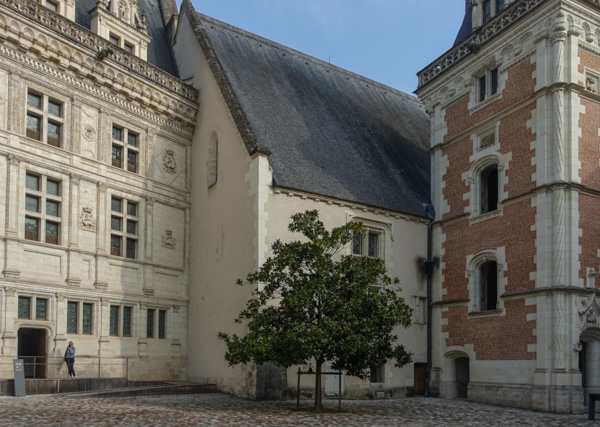
The Gothic part is stuck between the Flamboyant Gothic wing – the red brick to the right – and the Renaissance on the left.
Flamboyant Gothic – this section, to the left of the Gothic wing, is marked by the use of red bricks. It was built by Louis XII from 1498 to 1508.
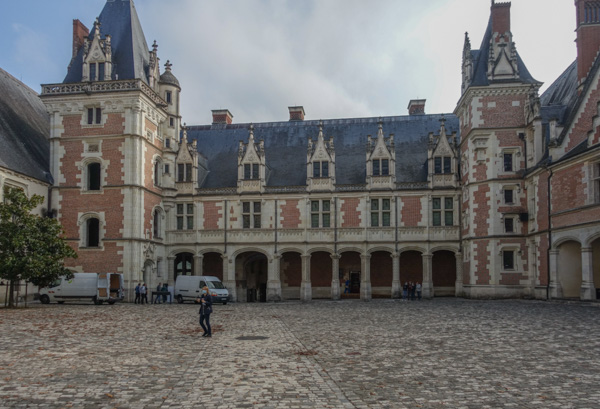
Renaissance – this section, on the other side of the Gothic wing, was built by François I, from 1515 to 1519.
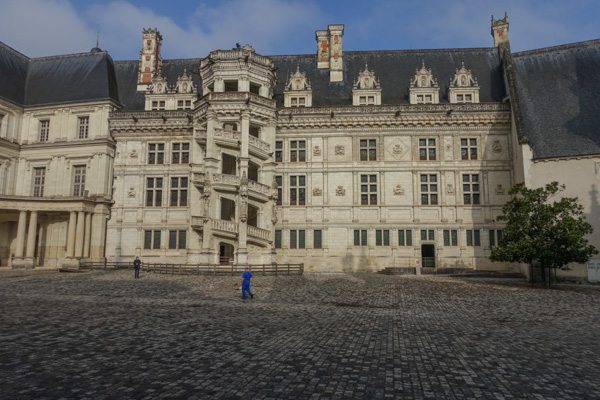
The Françoise 1 wing was originally symmetrical, with the spiral staircase smack in the middle. When Gaston d’Orleans decided to build his Classical wing (see below) he demolished the left quarter of François’s wing. I wish he’d left it intact!
Classicism – this wing was built by Gaston d’Orleans from 1635 to 1638.
So here, in one chateau, we can see 350 years of French architecture. Honestly, we were excited to stand in the middle of the courtyard, listening to the audio guide (the best we’ve ever had, really; it had five narratives just about the different wings and their evolution and creation). We’d read about the chateau and the wings, but we were concerned that we’d get there, look around and not be able to put buildings to eras and architectural styles. Not to worry: the audio guide made sure we could see and understand what each wing represented. Kudos to whoever created that guide!
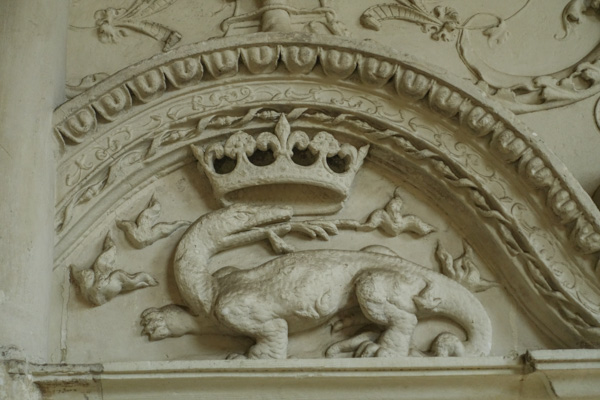
The salamander was Françoise 1’s icon (he was king from 1515 to 1547). It was believed that the salamander could walk through fire without burning, and could spit fire. Any time you see a salamander similar to this in France, it’s an indication that François 1 had a role in the decoration of the building.
Maybe because the weather had turned cold, the fireplaces of the Blois chateau caught my eye. You could have a bonfire in these, but considering that the only source of heat in a big, cold, stone room was a fireplace, a bonfire was probably a good thing. There are many like this here:
We spent quite a while at Chateau Blois, and then came back the next night for the son et lumière – the sound and light show. These things used to be kind of primitive, with spotlights and music and narrative in French, but now, they are pretty cool. Using laser lights, they can project characters on the walls, scenes as if in a movie and literally paint the chateau walls to highlight certain parts. Narration is though individual listening devices, so we could have our choice of about twenty languages. Sorry, hard to take a picture of it, so I don’t have any.
Jeanne d’Arc at Blois Chateau
Joan of Arc is the national hero of France. Every city, town, village and wide spot in the road tries to highlight some connection – any connection! – to Joan of Arc. (We heard of one town that she didn’t visit, but the town exhibits a letter from her to the town explaining that she wouldn’t be able to visit there. Given that she was illiterate, the letter is almost certainly a forgery, but the town displays it anyway.)
But Chateau Blois has a solid connection with Jeanne d’Arc. At the end of April, 1429, she spent several days in Blois, at the head of an army she had been given to lift the siege (by the English) of the city of Orleans. She left Blois, did in fact attack the English at Orleans and defeated them. The son et lumière explains that she prayed in the chateau chapel before she led her army to Blois. Well, maybe she did and maybe she prayed in another, long-gone chapel, but it makes for a good story.
Chateau Blois was the primary reason for our trip to the Loire Valley this year and it did not disappoint. In fact, we had high expectations of this chateau and it exceeded those expectations. A fabulous place.
The City of Blois
The city that holds the chateau is worth some time, too It sits on a steep hillside next to the Loire River and though one would think it would be touristy, it isn’t. Not that there weren’t the ubiquitous souvenir shops, but they didn’t line the streets. Blois really is an interesting city in its own right, and we enjoyed a bit of exploration here.
Houses Along the Loire
Some old and interesting streets
One thing we liked is that these streets, which one could expect would be lined with tourist-oriented shops, were not. The stores here were just regular stores, meant to serve residents.
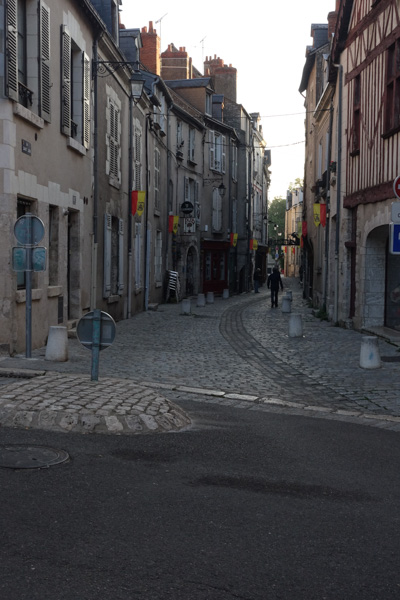
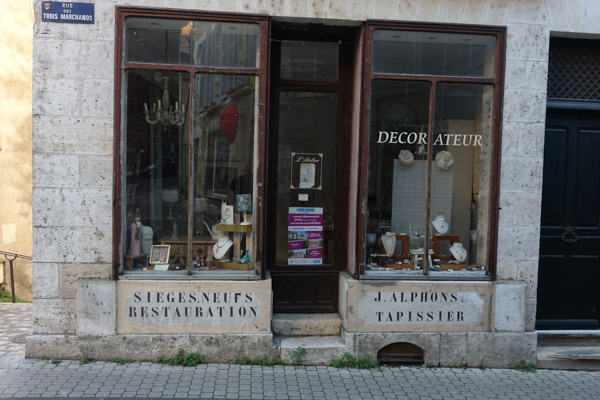
And a beautiful bridge, to boot. Completed in 1724!
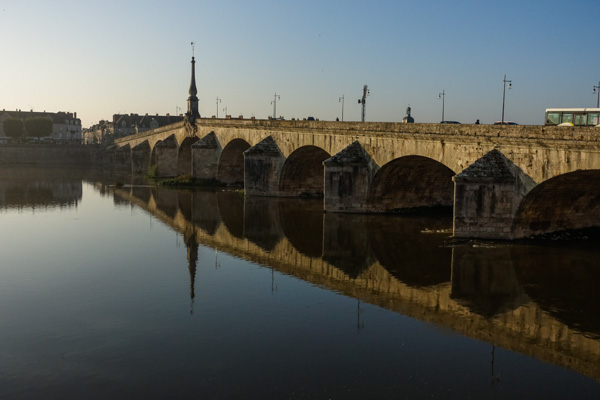
We really liked Blois, both the Chateau and the town. It’s on our rather lengthy list of places we hope to visit again in the future.
Next up (in a few days): Chateau Amboise and Chateau Azay-le-Rideau.


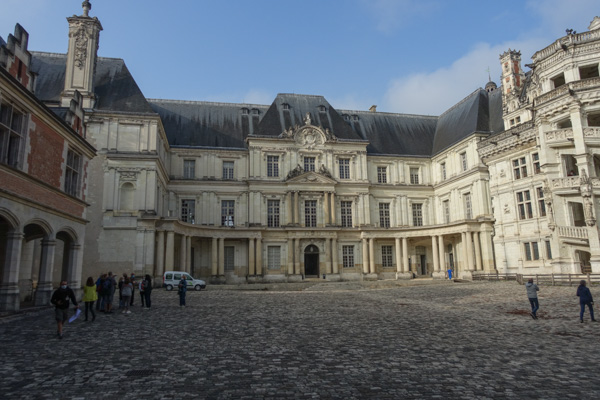
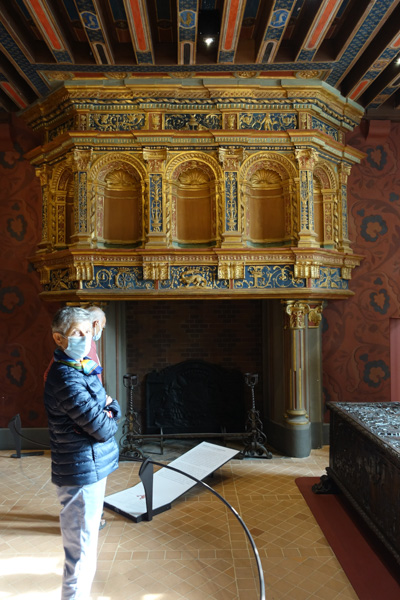
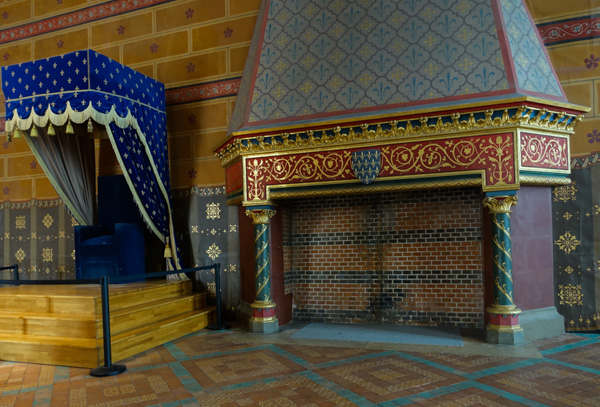
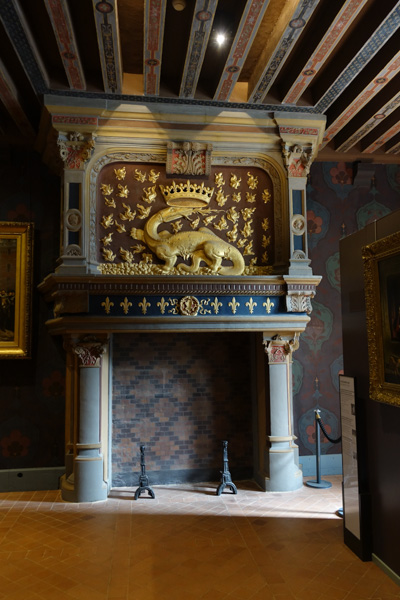
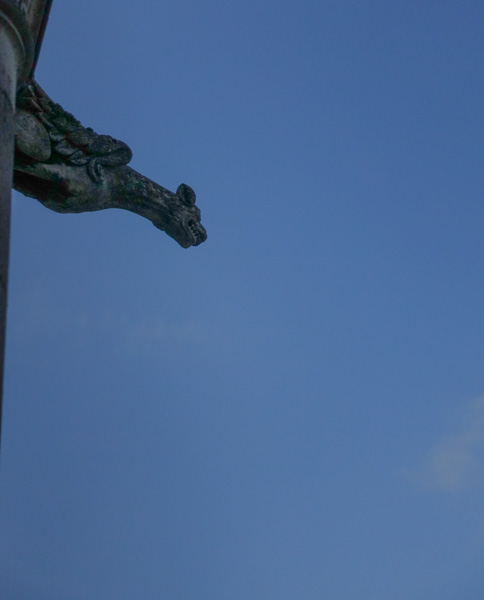
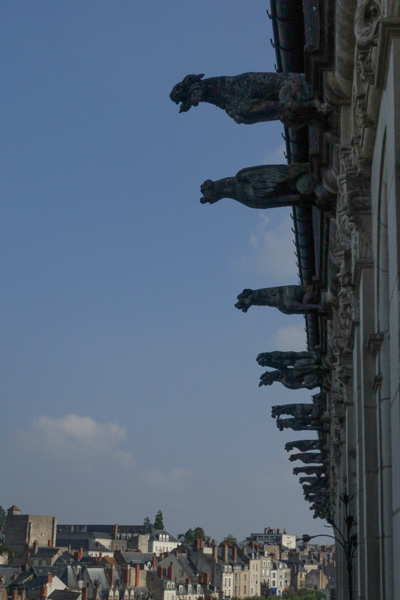
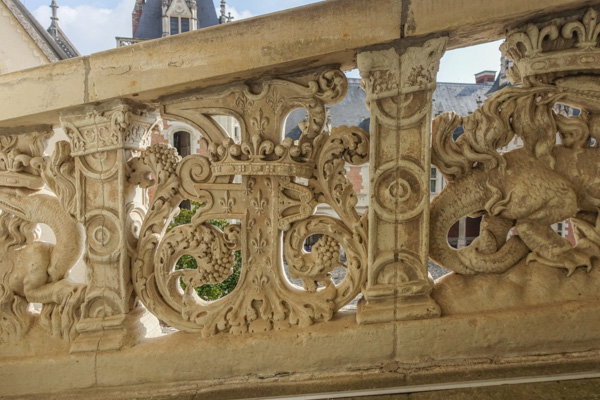
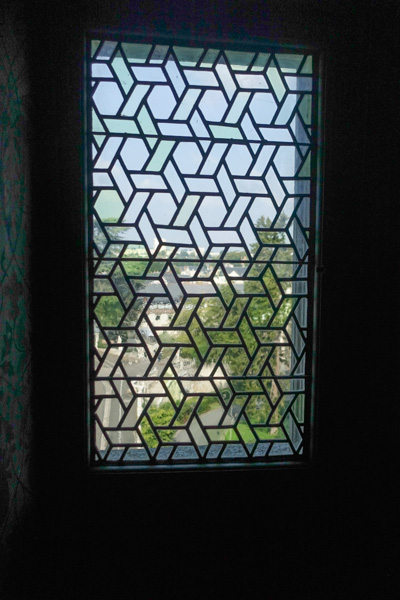
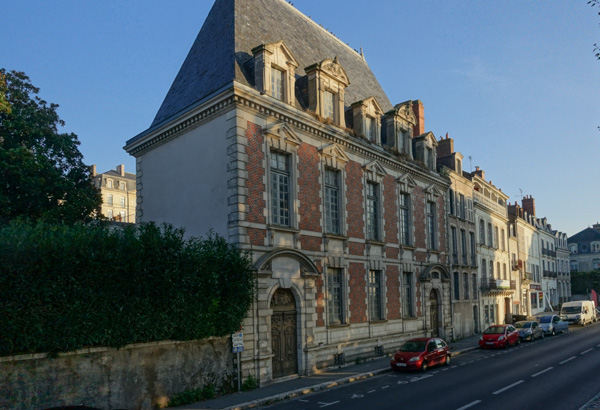
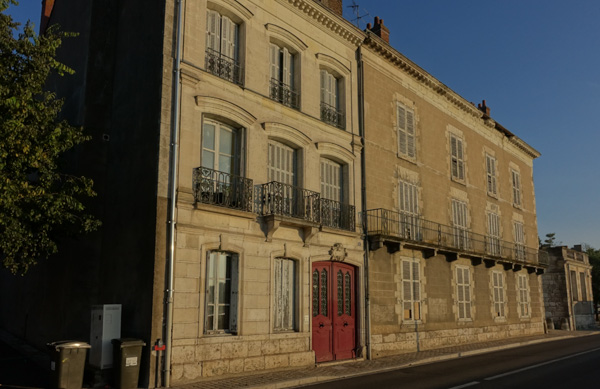
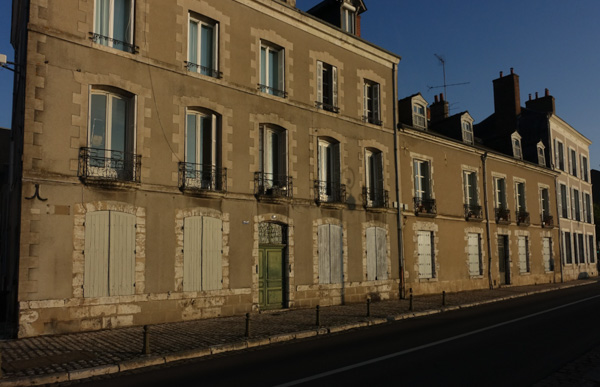
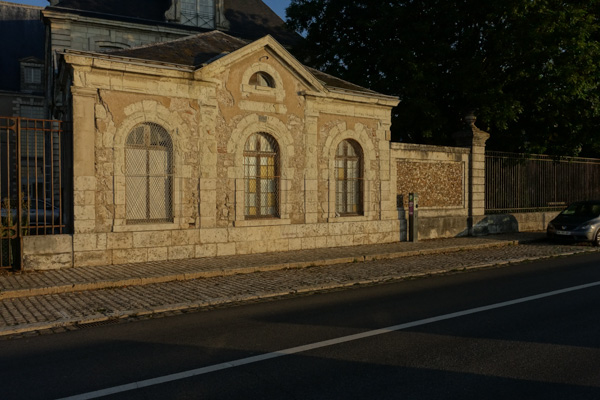
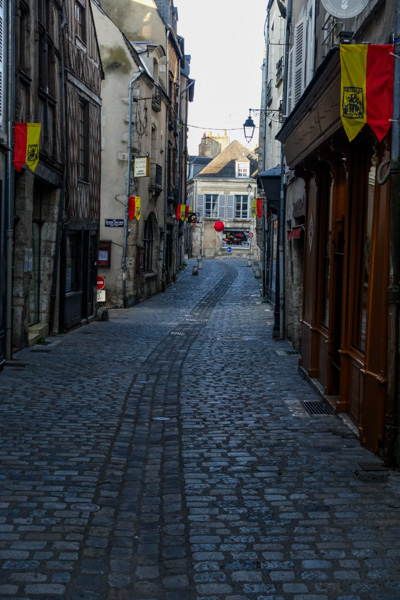
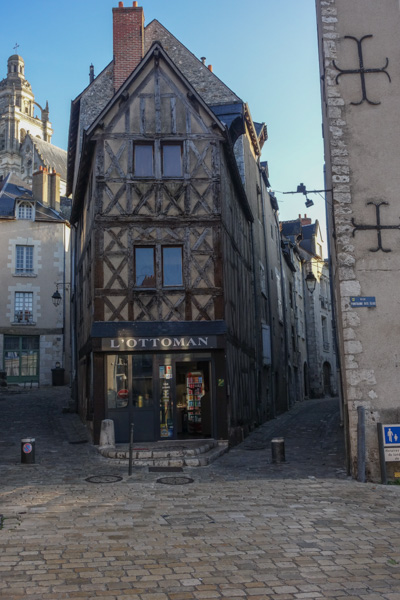
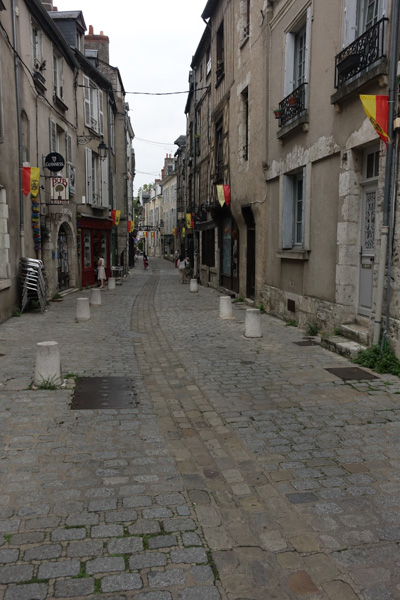
These buildings, the windows, the bridge, etc. are all so amazing…just beautiful. Thanks for sharing.
M. and I were commenting about the 4-era building on our walk. The topic photo and the bridge photo are outstanding! I love your description of the overworked reception clerk!